
Wood Stove Particulate Sampling Comparison Testing
Brookhaven National Laboratory
December 16 - 17, 2013

Brookhaven
National Laboratory is a multipurpose research institution funded
primarily by the U.S. Department of Energy's Office of Science.
It was established in 1947 at the former U.S. Army's Camp Upton, with a 5,000 acre site near Upton, on Long Island NY.
The arrow shows the testing location, at one of the combustion laboratories of the Energy Efficiency and Conservation Division.
The Director is Dr. Tom Butcher, who is Head of the Energy Resources Division, and was one of the judges at the Wood Stove Decathlon.

Across the street is the National Synchrotron Light Source II, a new $912,000,000.00 facility.
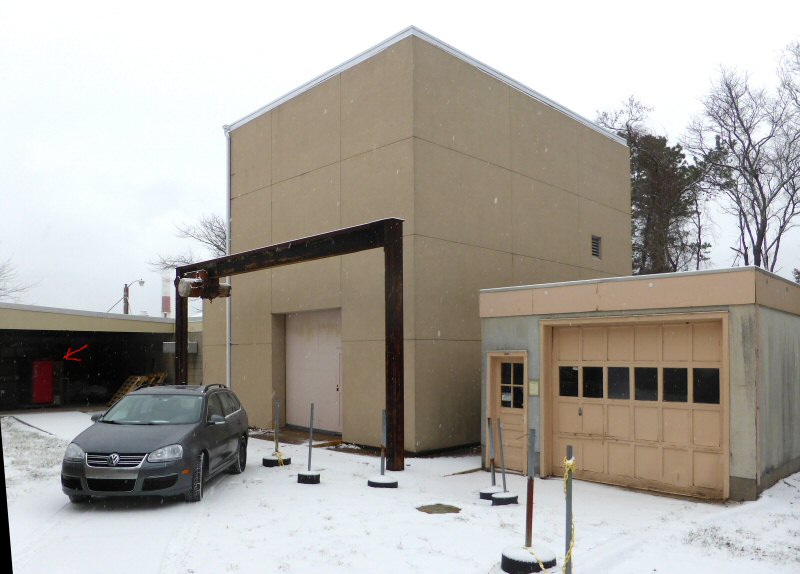
The combustion lab is in one of the original older buildings.
Note the red arrow, which is pointing to a boiler stored in the shed.
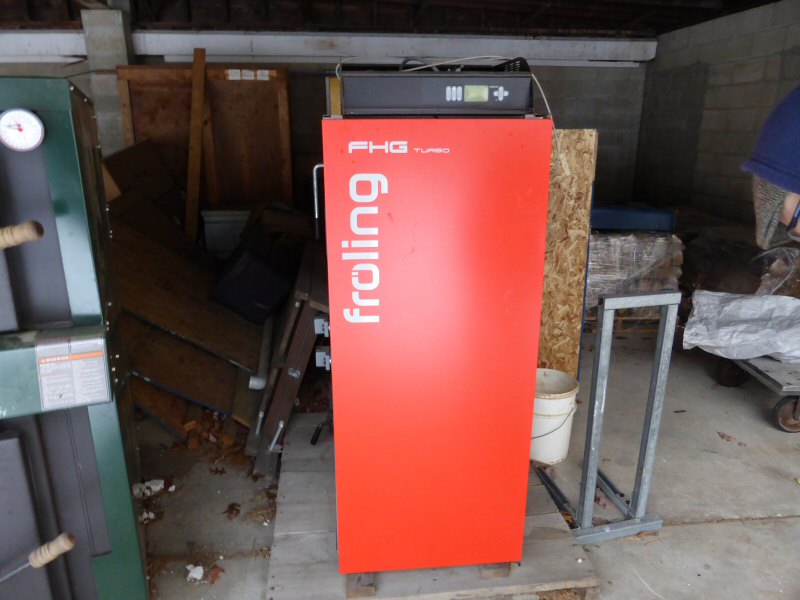
One of the wood fired boilers that has been used for testing.
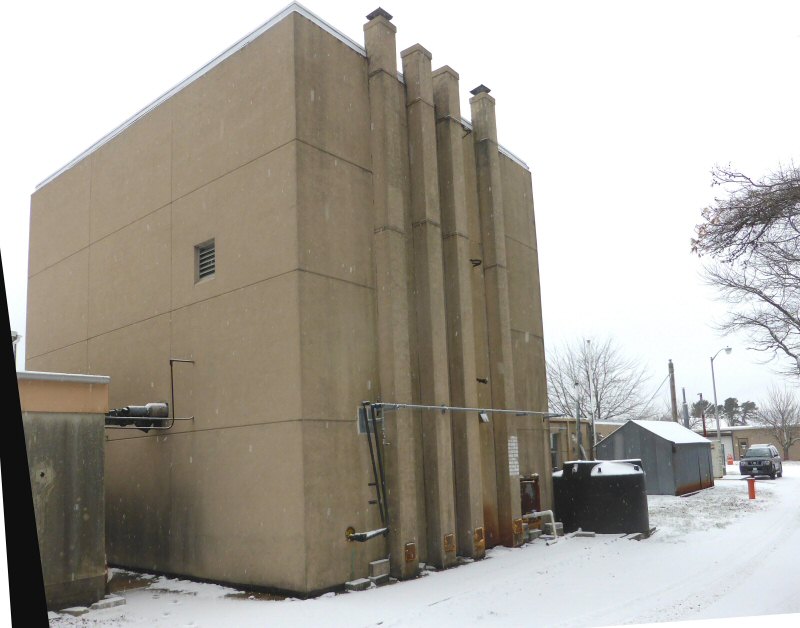
Chimneys.
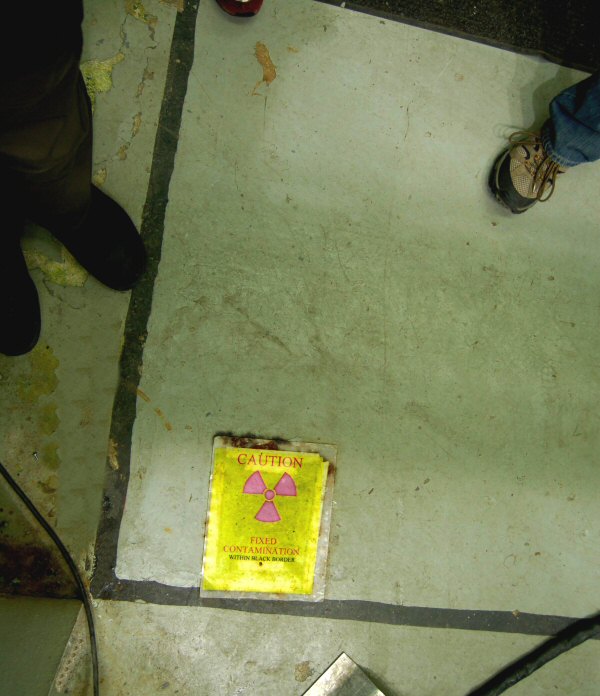
The black line shows the original footprint in the center of the lab for a chimney that was used for nuclear
work.
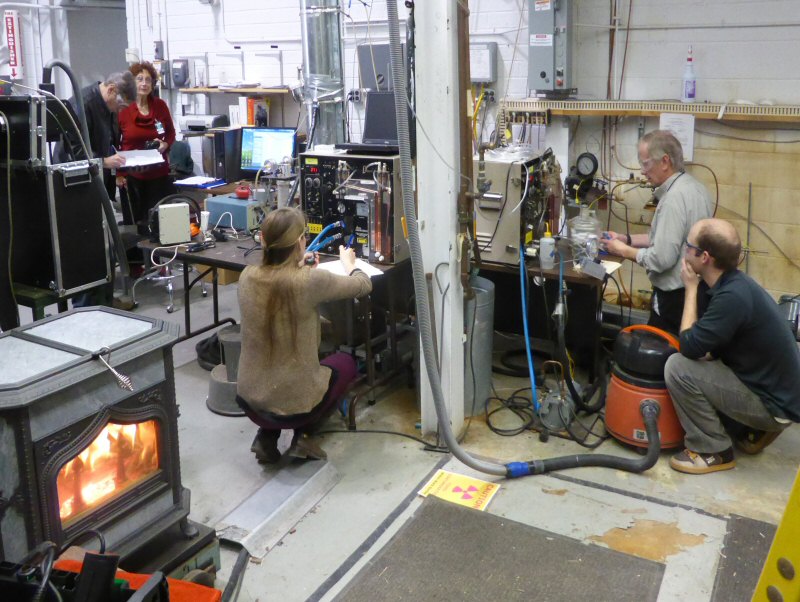
BNL technician Rebecca Trojanowski (centre) monitors one of the two EPA Method 5G sampling trains. She has a master's degree in
mechanical engineering, and was the lead technician at the Wood Stove Decathlon.
Tom Butcher is monitoring the second train. Carsten Homsted monitors the flow in the Condar portable sampler and
adjusts the vacuum motor to keep the flow constant.
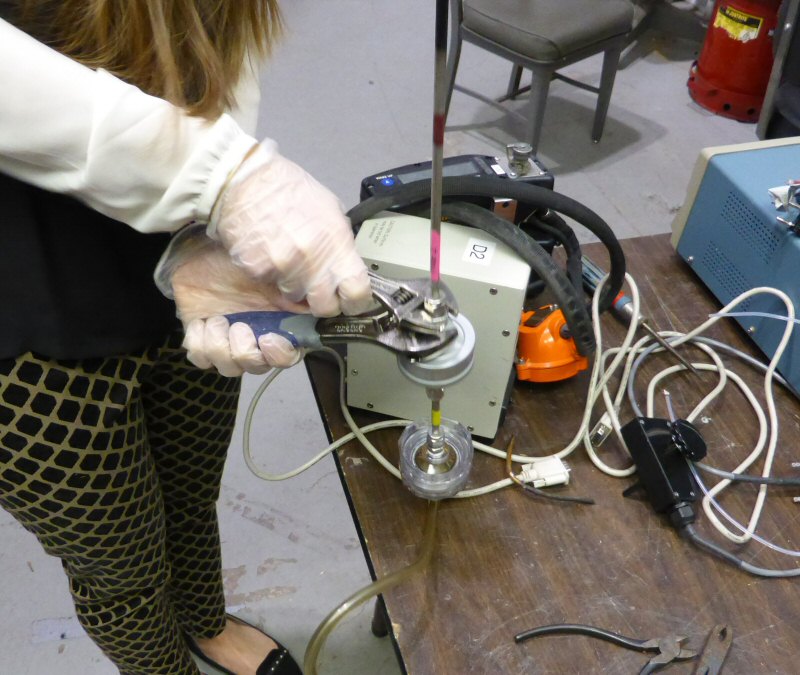
Detaching the probe from the M5G filter holder.
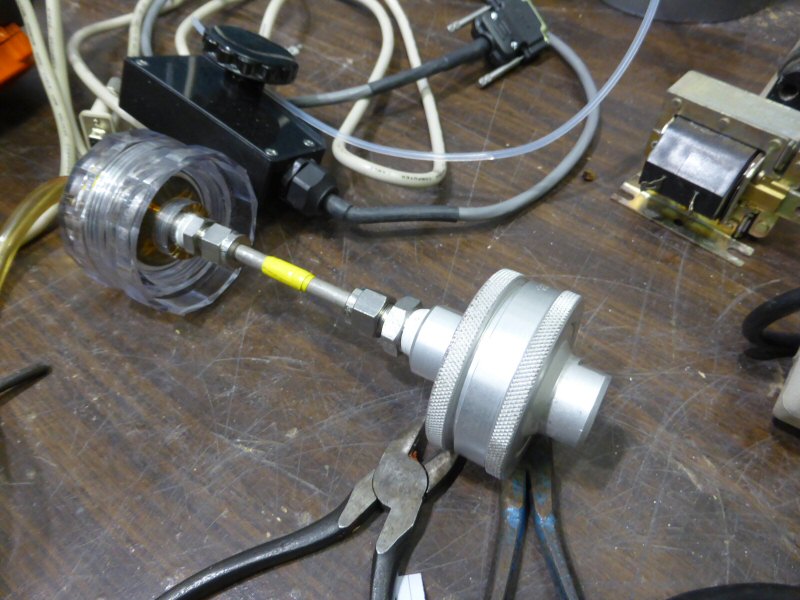
There
is a main filter (in the stainless holder) and a backup filter. The
catch remaining in the probe is weighed, and apportioned between
the two filters.
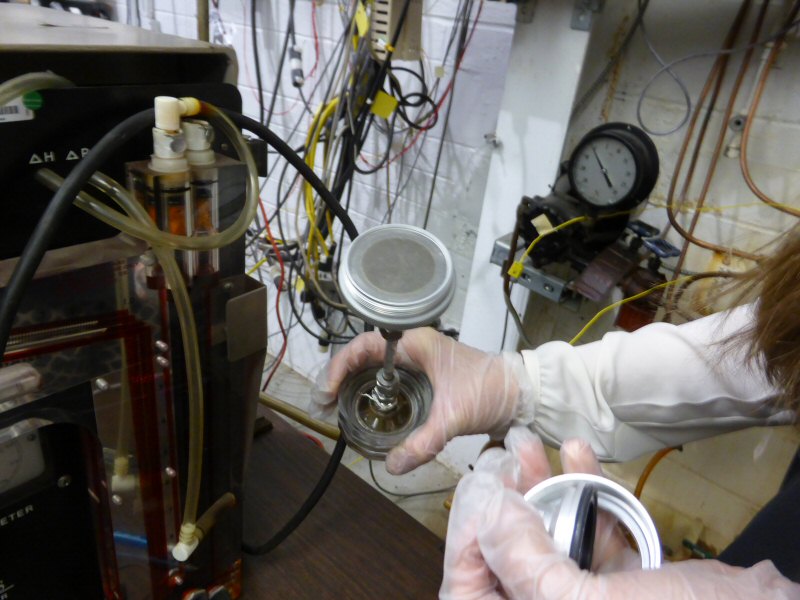
Glass filter with the particulate sample. The filter is weighed on an analytical balance to determine the PM catch.
The same balance was used to weigh both the M5G and Condar filters.
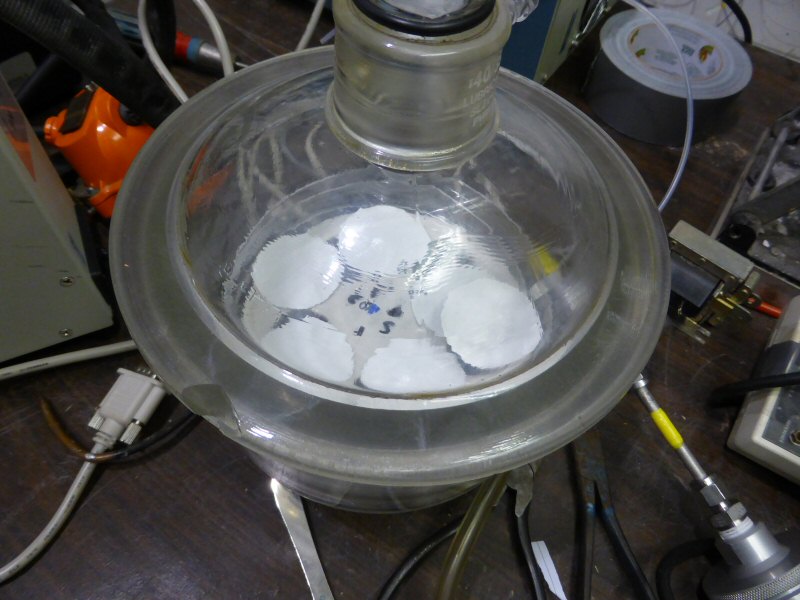
Dessication jar to ensure that the M5G glass filters stay dry. Dessication is a requirement of Method 5G.
In
prior testing, MHA determined that the 6" glass filters used for
the Condar method are not significantly affected by dessication,
and we do not use dessication. We do keep a blank filter that is
weighed along with every run before and after, to flag any moisture
pickup or issues with the scale.
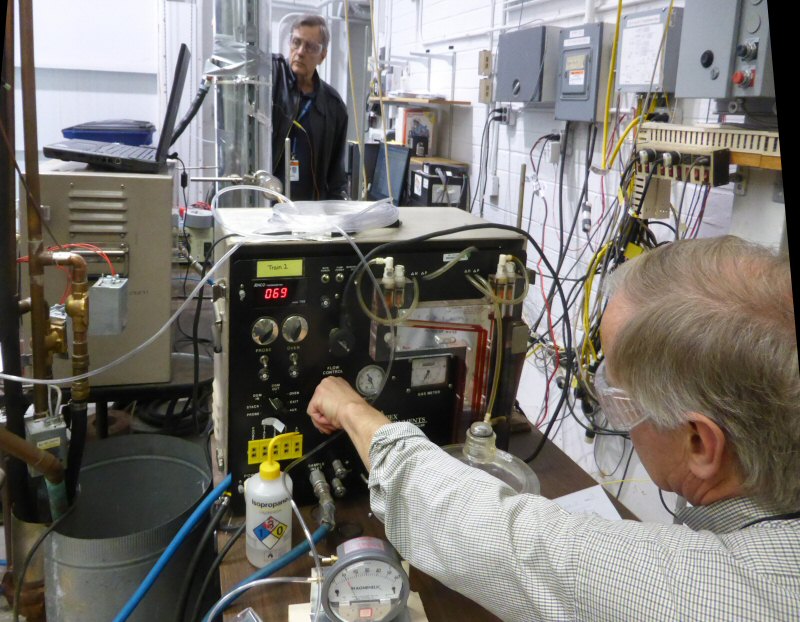
Apex Instruments gas sampling console.
The
console regulates the flow through the filter train with very high
precision. The M5G method uses proportional sampling, where the
sample
train flow is a known fraction of the tunnel flow. The CO ratio between
the stack and the dilution tunnel give the dilution ratio
of the tunnel.
The
Condar portable dilution tunnel is different. The dilution is a fixed
ratio (10:1) and the sample flow is constant, instead of proportional.
This introduces an
error compared to proportional sampling. However, for a cold start batch burning appliances such as a masonry heater, any error
would be to overestimate, since particulates are higher during startup, whereas stack flow is lower than the overall average.
The Condar was used successfully to do a field study of pellet stoves in New Zealand in 2006.
As part of the New Zealand pellet study, the Condar was compared against the Australian/New Zealand laboratory dilution tunnel
method, AS/NZS 4012/3. The correlation was very good, as shown in the graph below:

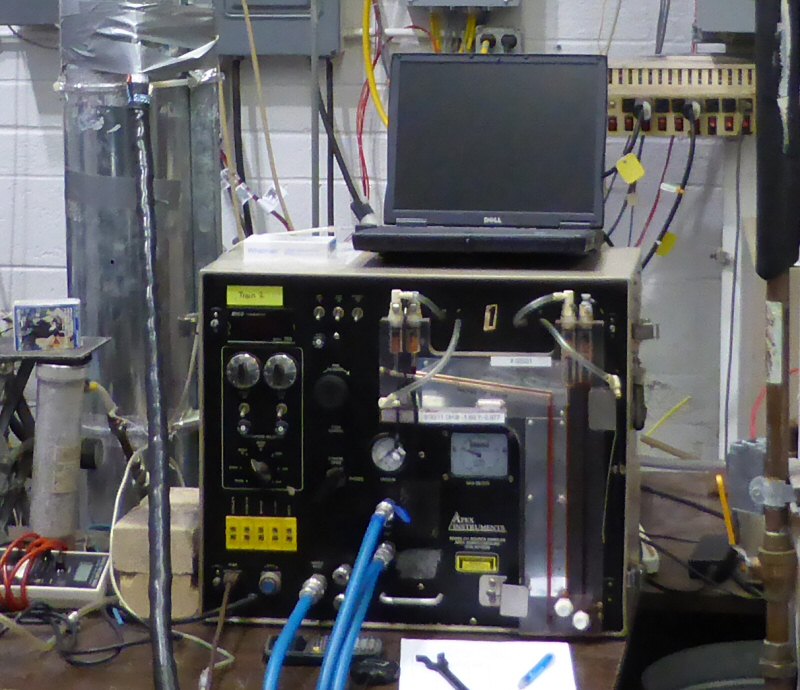
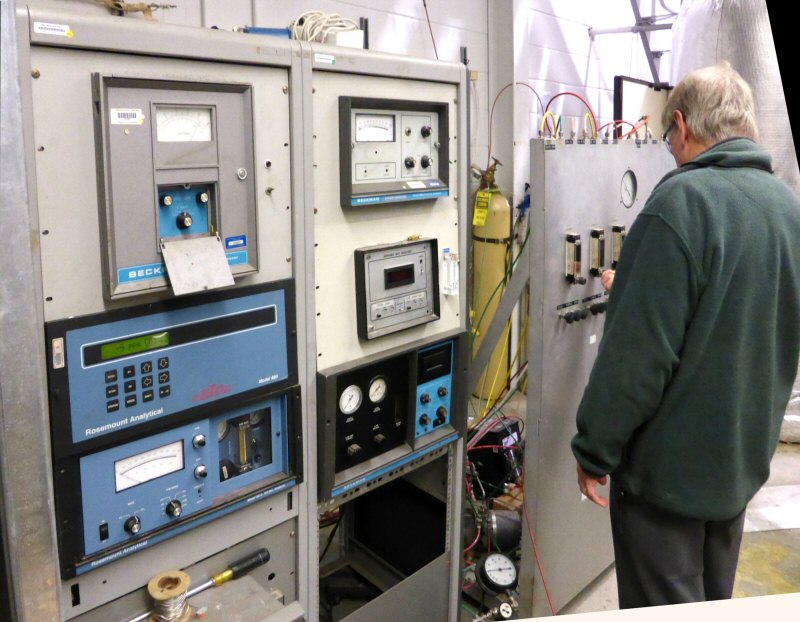
Gas analyzers. Top left is a paramagnetic O2 analyzer and below that is an infrared CO analyzer. Tom Butcher performs the
calibration, which is done daily.
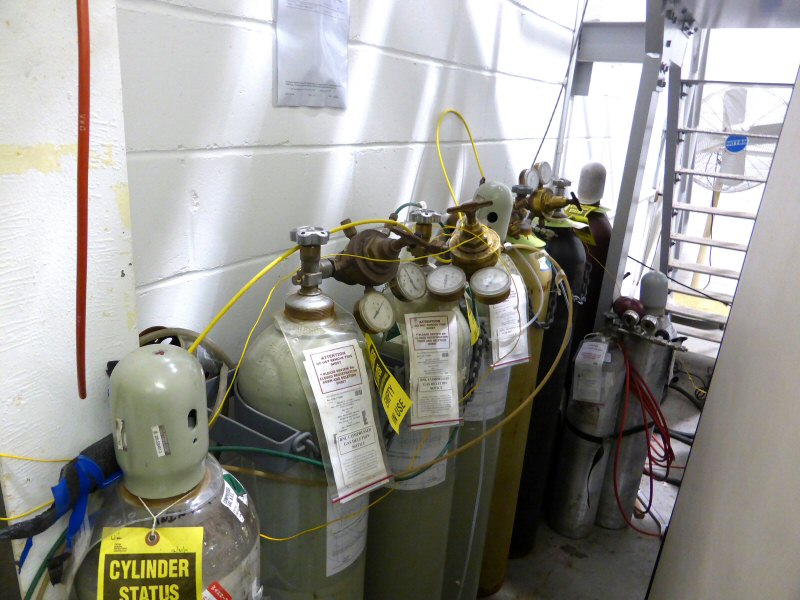
Calibration
gases. Normally there is zero gas and span gas. Span is the upper limit
of the instrument's range. For very critical work,
you can also use a third calibration point in between zero and span.
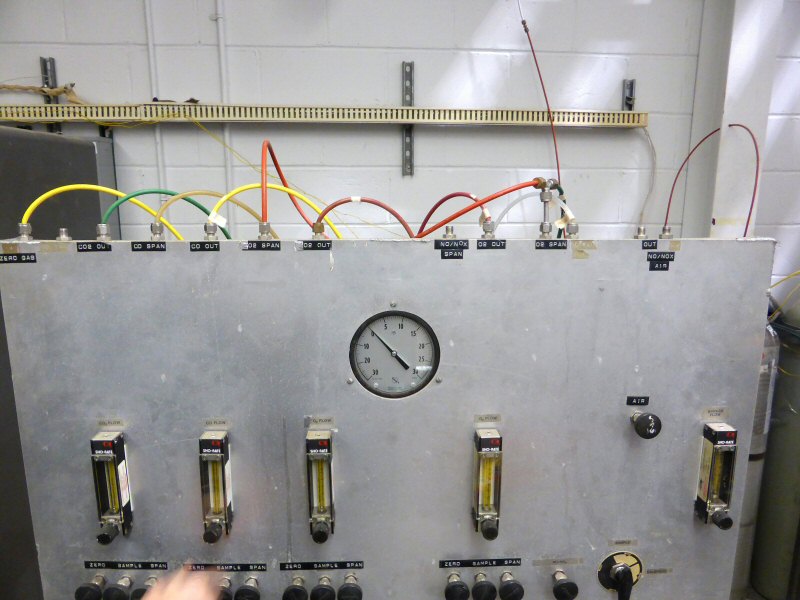
Calibration gas control panel.
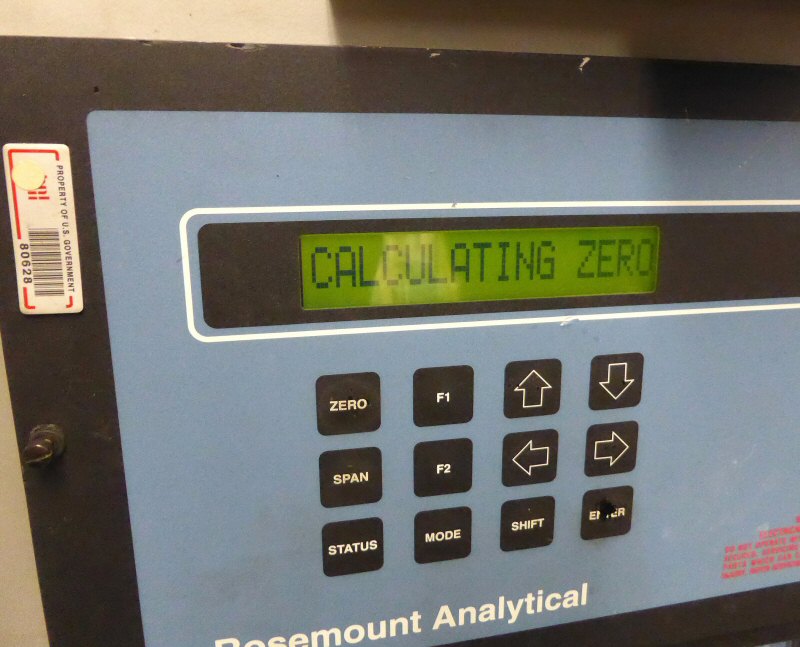
The
CO analyzer performs an automated routine. When you change calibration
gas cylinders, you have to input the specific value on
the new cylinder. The span gas on this analyzer was around 8,000 ppm.
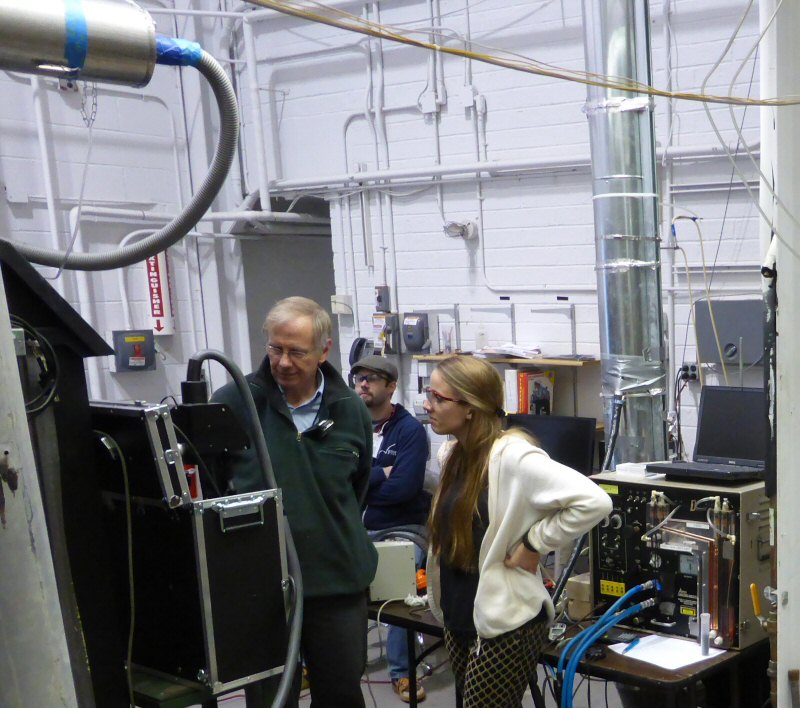
Reading
the Woehler analyzer. This is a new German PM sampling system that can
weigh a filter cartridge in real time as it loads up.
It is designed
for the new mandatory German in-home test. It takes a 15 minute sample
and uses "manufacturer's instructions" for firing
the appliance.
Not
surprisingly, "manufacturer's instructions" more or less state :
"establish clean burning conditions and then run the 15 minute test".
This was one of two new German instruments used for field sampling at the Wood Stove Decathlon.
More details on the Woehler.
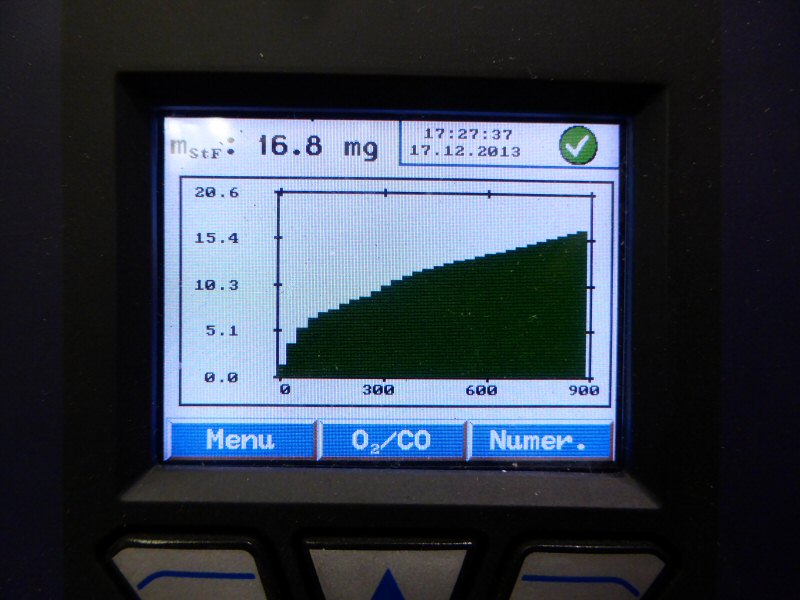
This graph shows the cumulative filter loading over the 900 second test cycle.
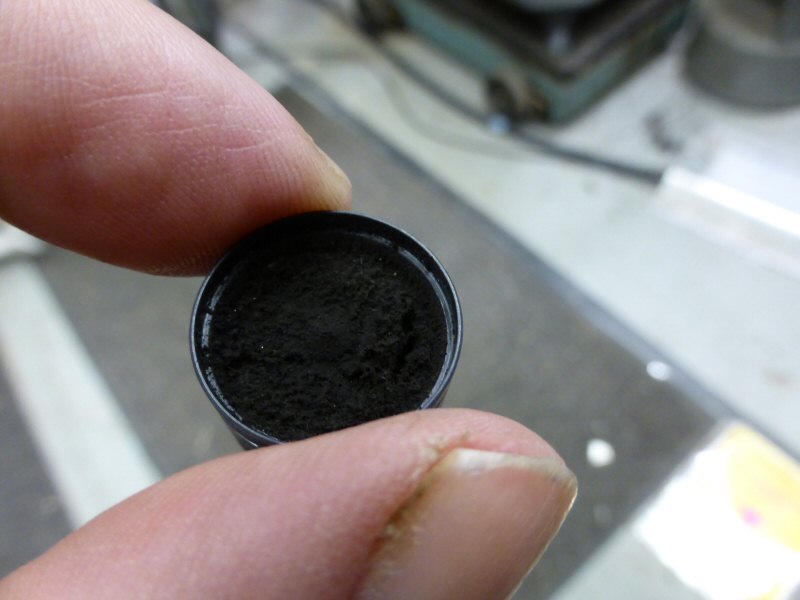
A
dirty run will load the filter pretty quickly. The Woehler is not
designed to measure dirty stoves. If your stove were to get the filter
this dirty, the new German regulation would require the removal of your stove.

Rear of the filter.
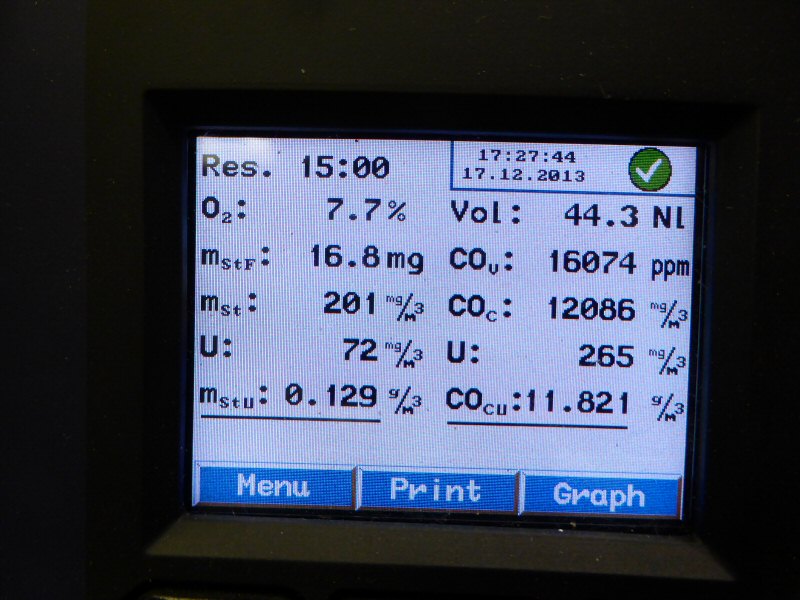
Final readings for the second test run. We did a total of 3 runs over 2 days.
"mst"
at 201 is "Masse Staub" or particulate mass (per standard volume). The
measured particulate emission factor on this run is 201 mg/m3.
This
is adjusted with an "uncertainty factor", so that the reported value
becomes 129 mg/m3. The new German regulation gives you the benefit
of
the measurement uncertainty because if you fail the test, you have to remove your stove.
The
law requires your sweep to test your stove for emissions every two
years. The procedure is part of your mandatory chimney cleaning.
The whole thing takes about an hour and costs $150.00
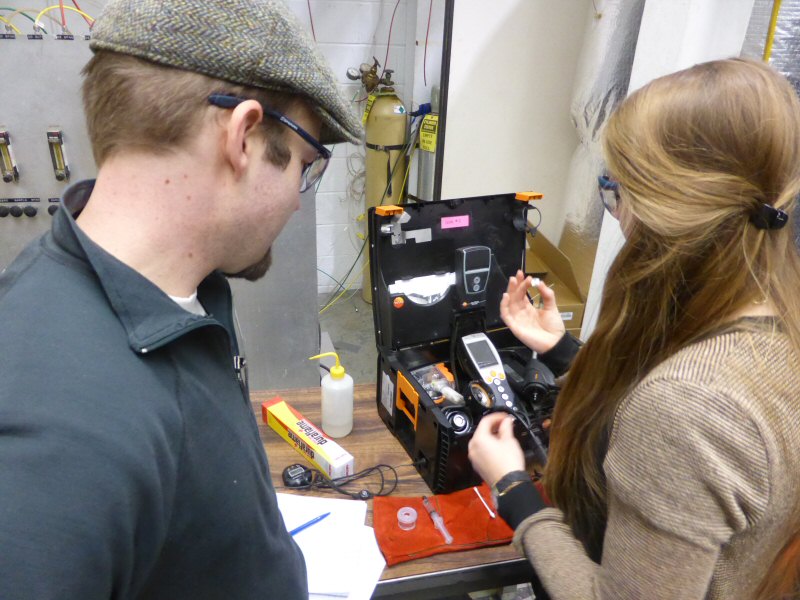
Rebecca
Trojanowski demonstrates the new Testo 380 portable emissions analyzer.
It is similar to the Woehler, but uses a different
sampling
method. It uses an impactor rather than a filter, also weighed in real
time. We used a Testo at the Decathlon, alternating
runs with the
Woehler. The main reason for the testing project shown here is to
compare the two German instruments with each other
and with EPA Method 5G.
MHA
and the masonry heater community are fortunate to have been invited by
Dr. Butcher to include the Condar in the comparison testing.
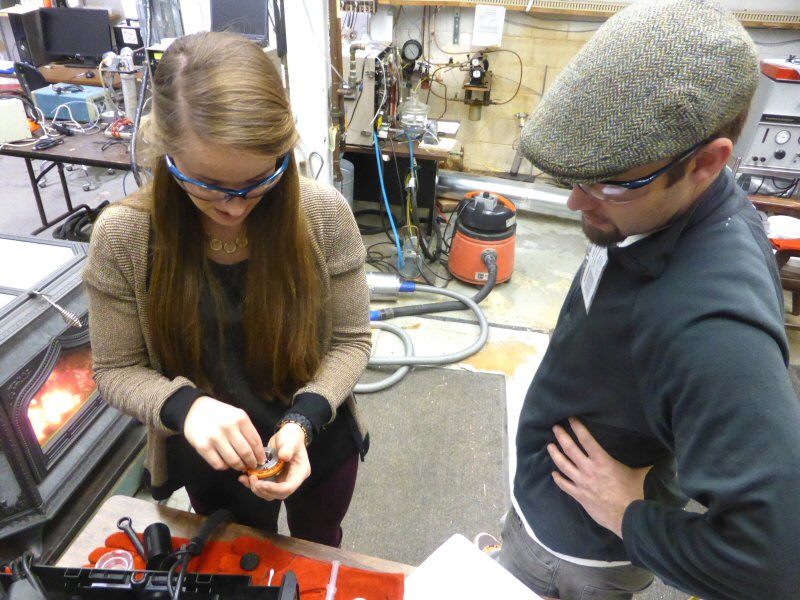
The impactor plate is easily cleaned with alcohol, so there are no filters to buy.
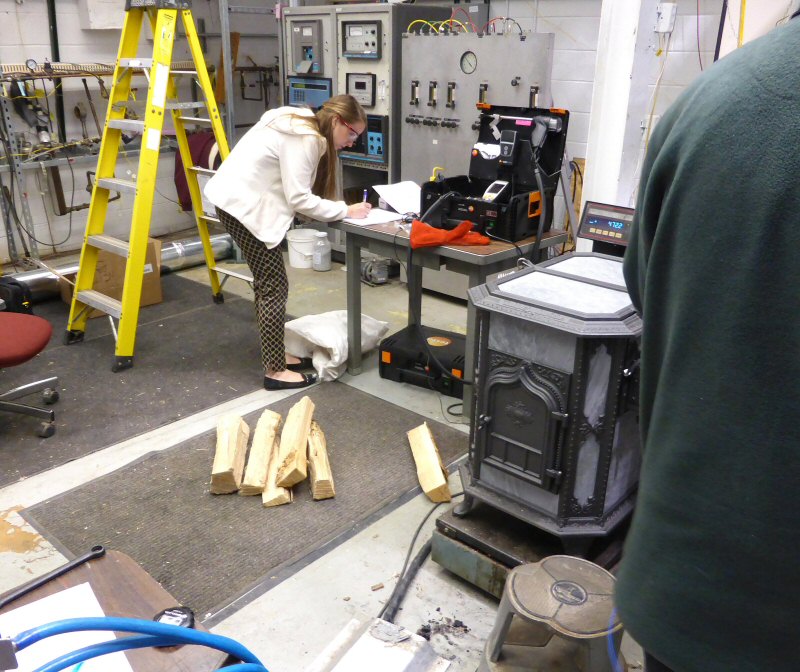
Load of fuel ready to go.
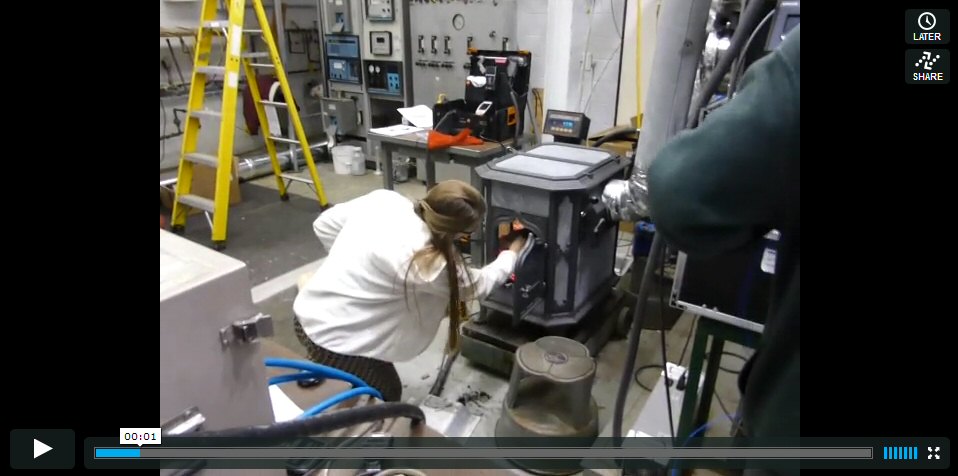
Video: loading the stove.
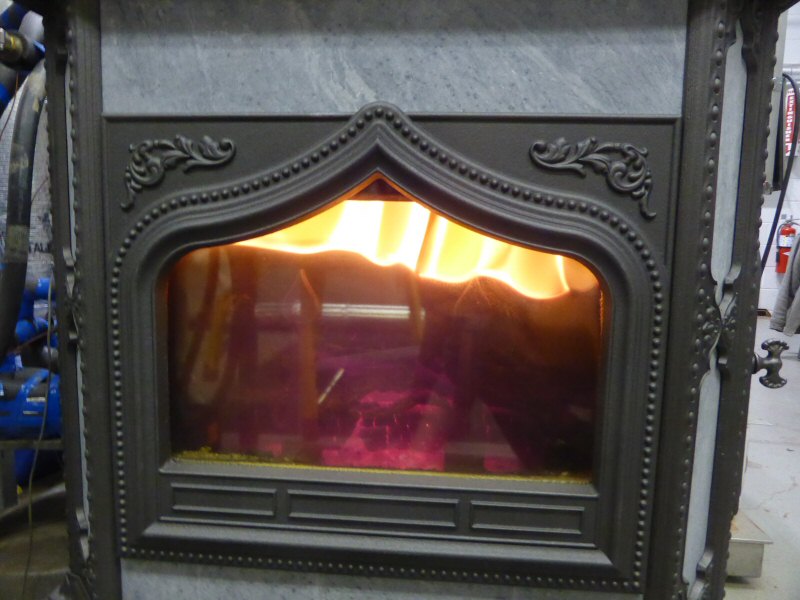
Instruments
were late getting ready for the first burn, so the air was shut down to
prolong the fire. Wood batch was starting to enter
the charcoal phase, and produced this interesting flame sheet, somewhat like a northern lights display (see video below).
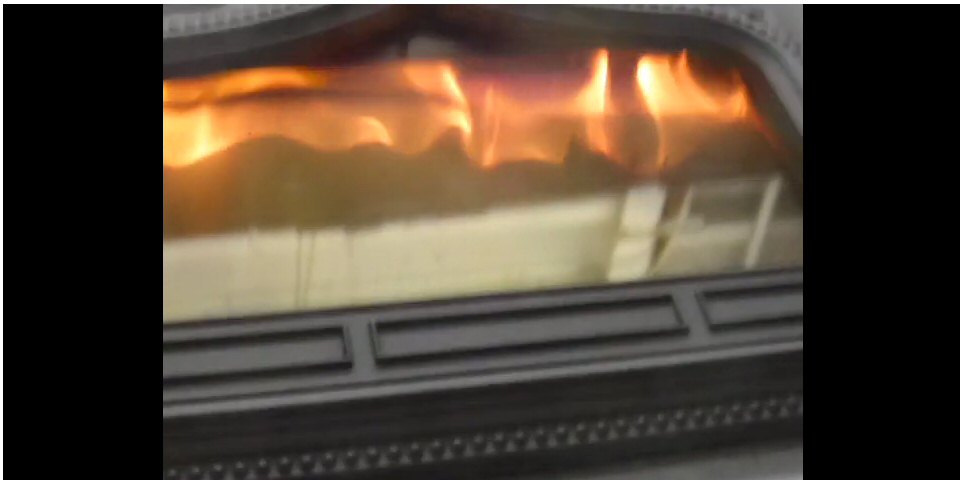
Video
Towards the end, looking up, you can see the inlet to the catalytic converter.
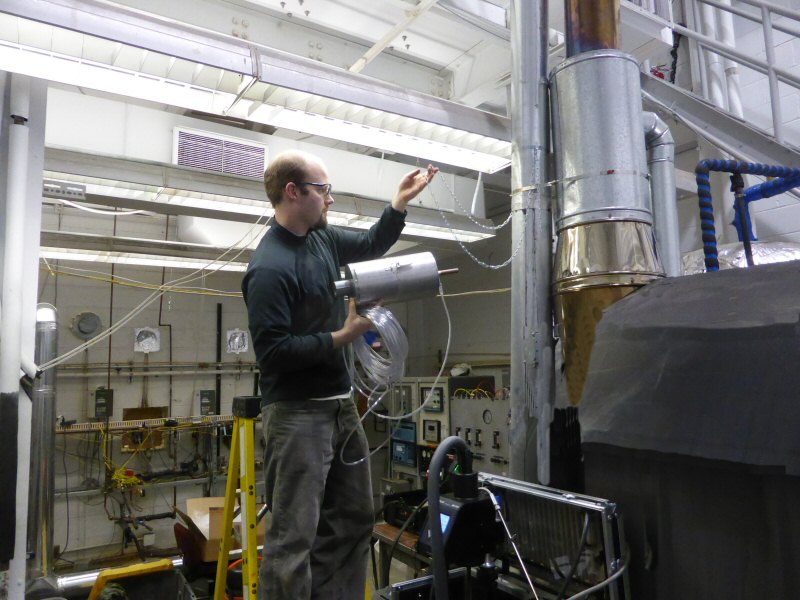
Installing
the Condar sampler. The nozzle at the right is inserted into the stack
at 8' above floor level. The plastic hose is connected
to a pressure
tap on the nozzle, that allows the flow rate to be kept constant by
adjusting a vacuum motor as the filters load up.
At the rear is a
connection for a vacuum hose to drive the sampler. The filter are
located roughly mid-barrel and the barrel is in two
sections that clip together.
More information on the Condar.

Ready to sample with the Condar. We sampled during the 15 minute German cycle for comparison with the other methods.
We
used additional filters to extend the sampling to a complete burn
cycle. We attempted to get reasonably close to an EPA number,
which is done with a hot-to-hot batch burn with the stove on a scale.
The downpipe from the laboratory dilution tunnel is visible to the right. This is where the M5G probes are inserted.
The
downpipe connects to two powerful fans that exhaust to the outside. At
the other end, 16 ft above the floor, is a collection hood
that
captures the entire effluent from the stove and dilutes it with room
air to simulate what happens in the atmosphere to condense
tar into sub-micron size droplets and create smoke.
The
German analyzers both sample hot, so will miss some of the volatiles
that condense into PM. This should not make much difference
on clean
stoves such as masonry heaters or pellet stoves, but one would expect
less catch than M5G for a dirty stove. One of the purposes
of this testing was to explore this issue..
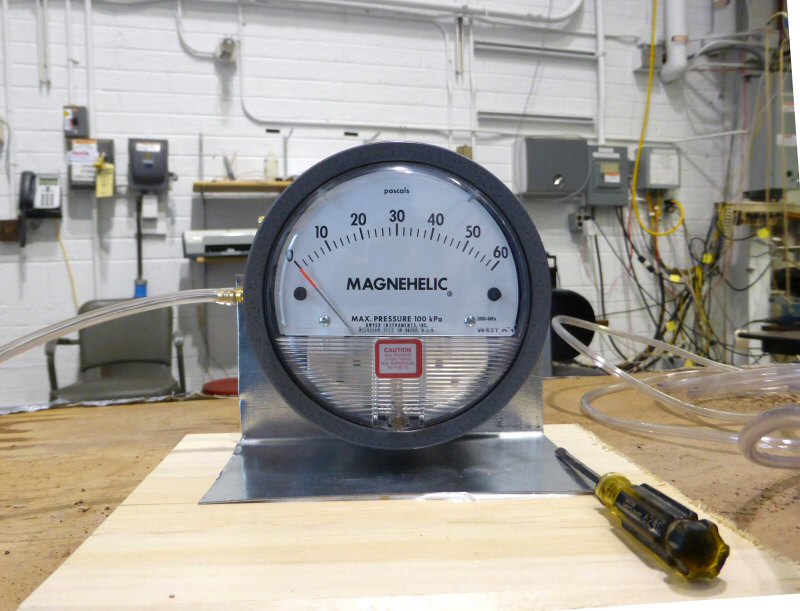
Zeroing
the magnehelic micromanometer. The Condar nozzle is calibrated to
provide 0.4 cfm of flow at -12 pascals pressure at the
nozzle..
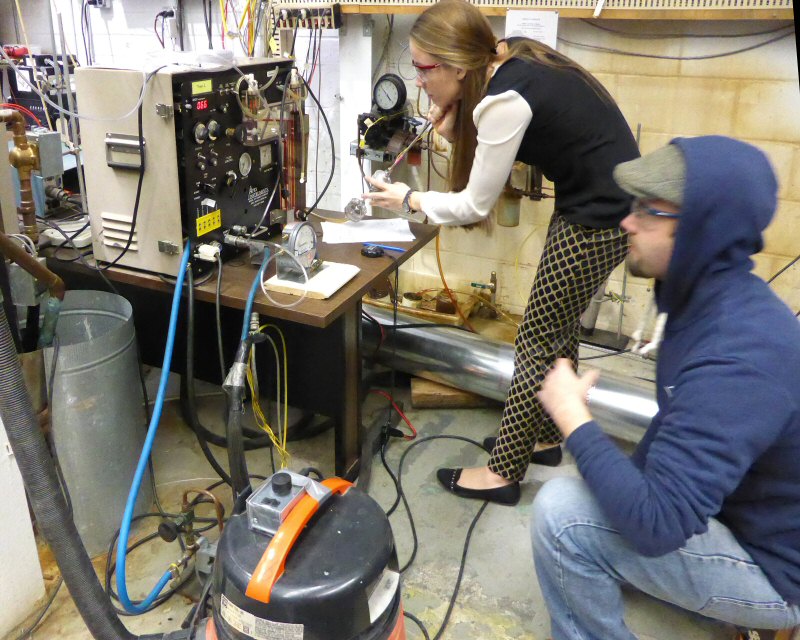
Carsten Homsted watches the magnehelic as Rebecca Trojanowski keeps an eye on the M5G train.
A speed control is mounted on top of the vaccuum motor to allow adjustable suction.
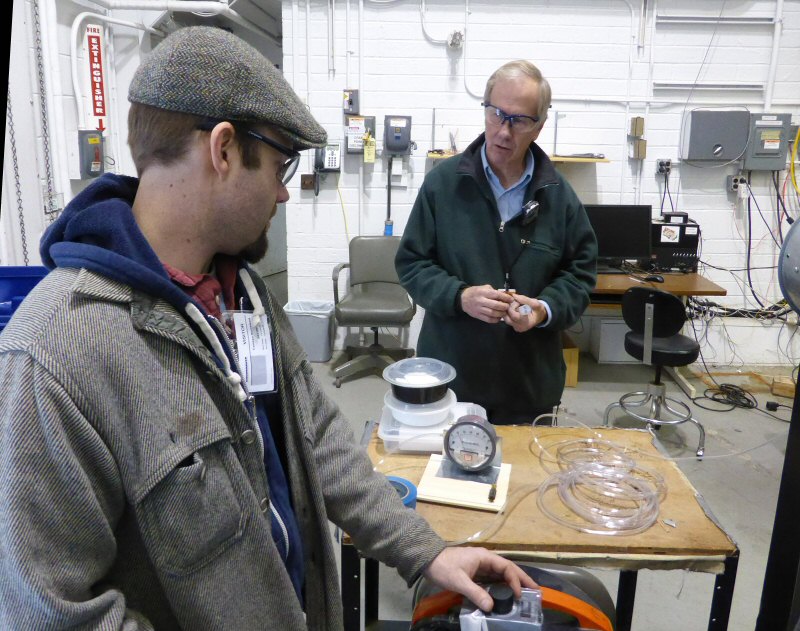
The Condar uses 6" glass filters, which are kept in the plastic containers behind the magnehelic.
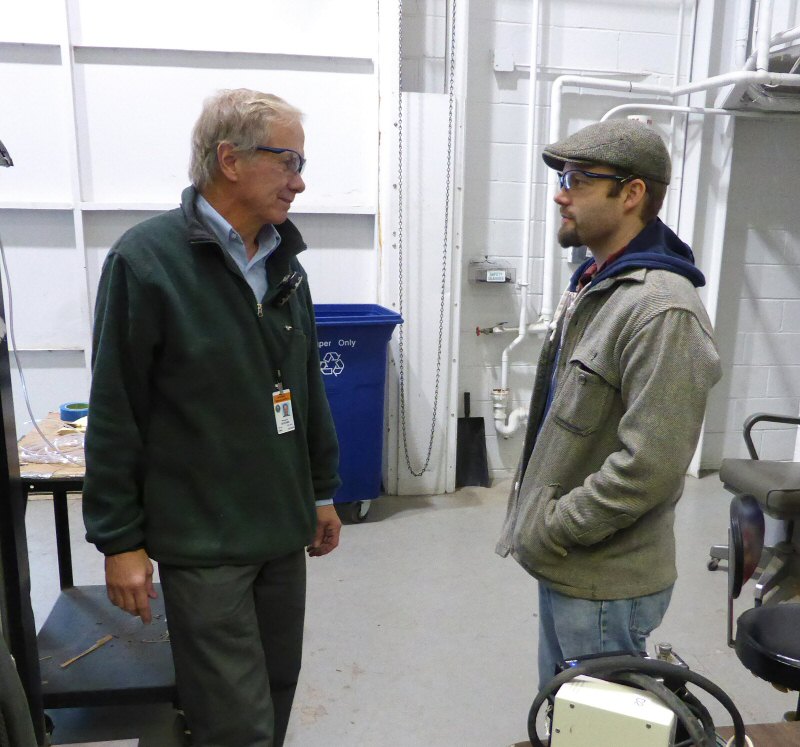
Thanks again to Dr. Butcher and Brookhaven for inviting us to participate in this exciting research.
This page was updated on January 26, 2014
This page was created on December 20, 2013






